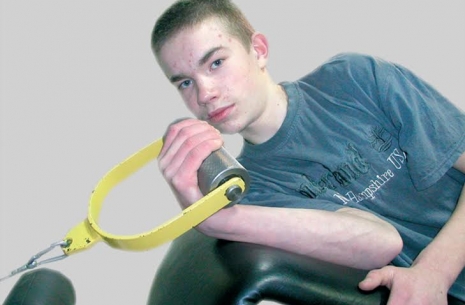
A few basic exercises used in armwrestling. ()
Success in armwrestling, just like in any other sport, is a complex matter: strength and speed, stamina, technique and tactics. But strenght comes first every time. Without strenght, neither technique nor speed will bring results. Strenght is static exercises, with large weights. The heavier weights, the bigger strenght, but then again – the more weights, the longer it takes for muscles to recover. This needs special consideration when planning your workouts. Different from bodybuilders, who work all muscle groups evenly, armwrestlers focus on their arms the most. It's therefore wise to not perform all exercises at once, but divide them into sets. Let's say that in one exercise you do radial on the pulley, in another you do biceps. Armwrestling is fighting before all, so sparrings are also a must. It's like in boxing, you cannot become a champion training only on the bag. Sparring is a great strain on muscles and tendons, so you need to be careful. I wouldn't recommend sparring after every workout. I myself use the following scheme – Monday, Wednesday – weights, friday – sparring. Table training should not be about sparring only. Just like a boxer works their moves by repetition, so should an armwrestler. For the novice, the worst enemy is speed and overload. Exercising too fast or with a too strong partner you cannot control your movement completely. You should change sparring partners often, to properly perform moves, despite differences in opponent's weight, height and technique. Learning technique – that's the basis of future success. Only the understanding of mechanics will give you the skill to properly perform with weights. A qualified trainer is necessary here. Below we present a few basic armwrestling exercises.
RADIAL LIFTS WITH PULLEY
Radial – one of the most important muscles in armwrestling. This muscle decides how much you can control your arm in the elbow joint. Starting position – arm bent with 90 degree angle. Grip cable over index finger knuckle. When performing exercise, remember to control:
forearm perpendicular to the floor at all times,
forearm should not “break”,
elbow angle should remain the same throughout the whole move.
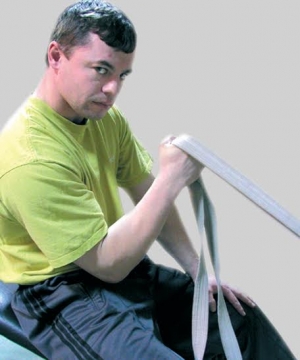
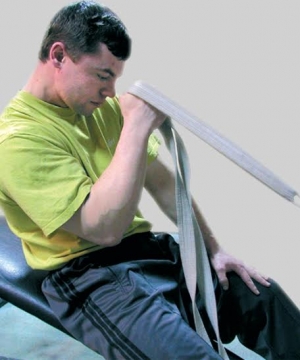
RADIAL LIFTS WITH PRONATION
Starting position – arm bent with 90 degree angle, palm open towards biceps. Grip cable between index finger and thumb. Pull towards your temple, twisting arm outwards.
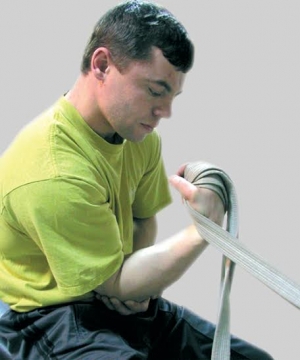
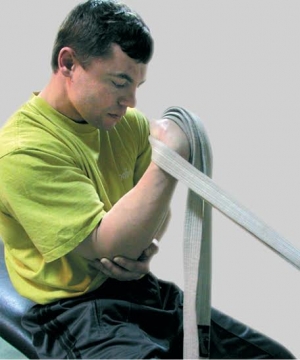
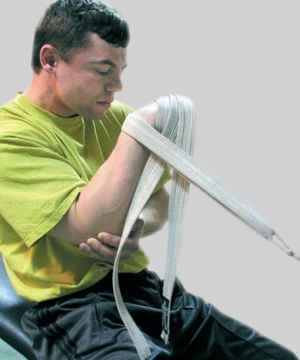
PRONATIONS ON TRAINING MACHINE
Starting position – arm bent with 90 degree angle, holding machine grip (palm turned left). Arm and elbow should be in line with the machine grip. During exercise, the return movement should be a pronation of grip, not just a return movement of elbow.
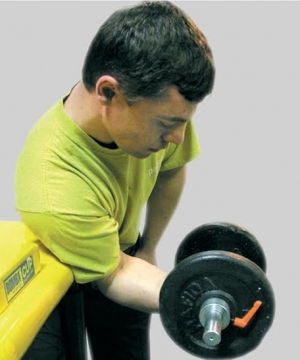

BICEP CURLS
Starting position – seated on bench, body inclined slightly forward. Arm bent at 80 – 90 degrees, elbow touching the center of your belly. Curl towards chest. Movements need to be controlled, so that the elbow does not detach from body, and arm does not rest on knee.


FOREARM CURLS
Starting position. Forearm on bench, palm on machine grip. Varied angles with machine cable, work on your most preferred angle.

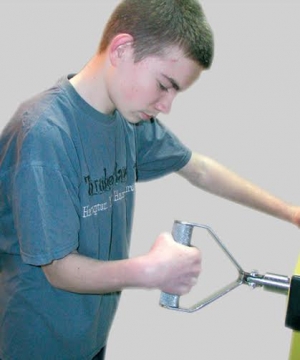
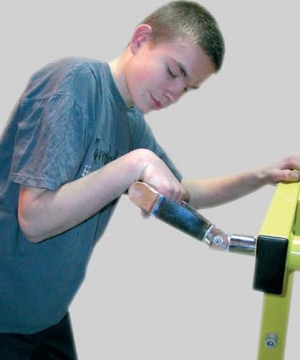
EXTENSIONS
Starting position – arm extended along body, holding weighted belt. While performing exercise, please keep forearm steady, only the hand does the work.
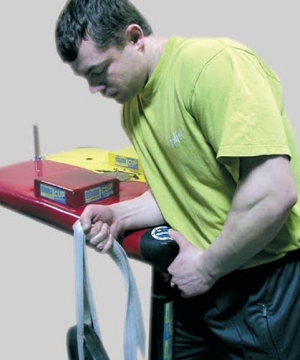

ARM ON EXERCISE MACHINE
One of the most basic rules of all exercises: maximum pressure is applied to muscle when strenght vector (ex. pulley cable) is perpendicular to the bending segment of your arm. Keep this point somewher in the middle of the amplitude of your movement.
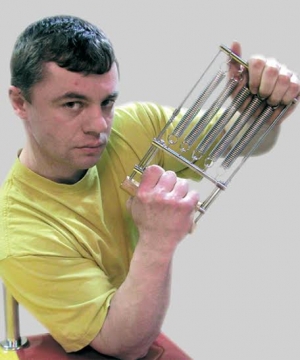
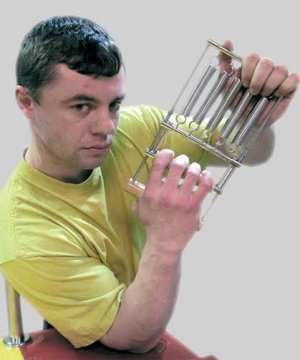



Archive >>>
Biceps training in three stages
Todd vs Pushkar
Return of Alexey Voevoda
From our archives - The Clash of the Titans!